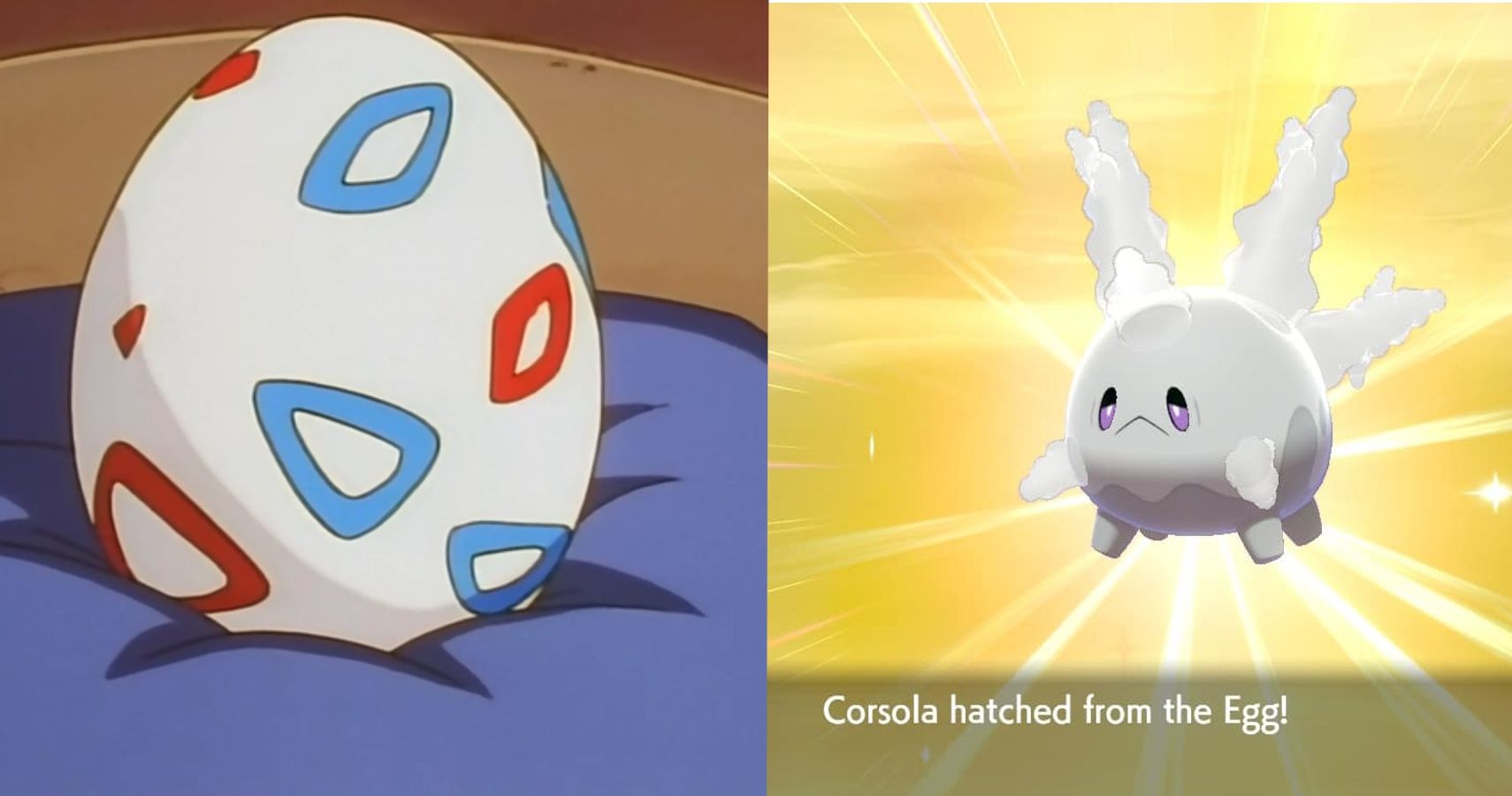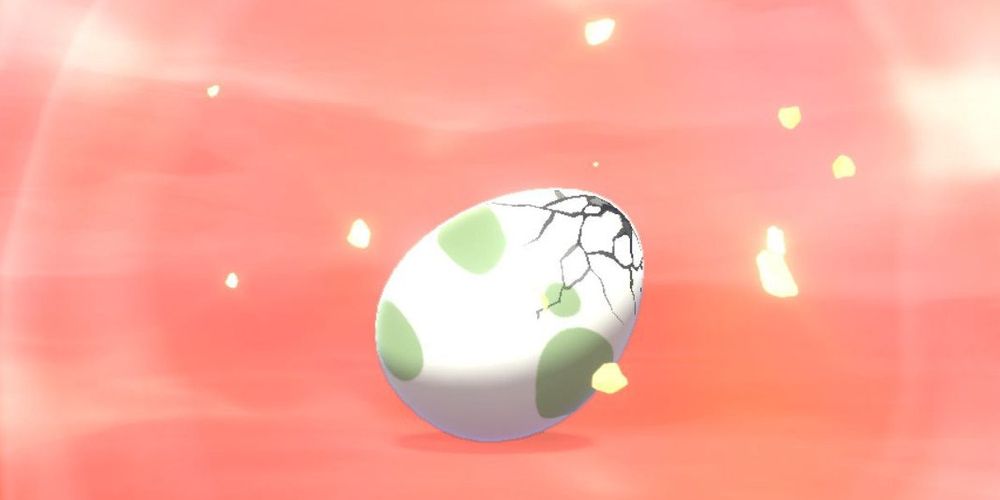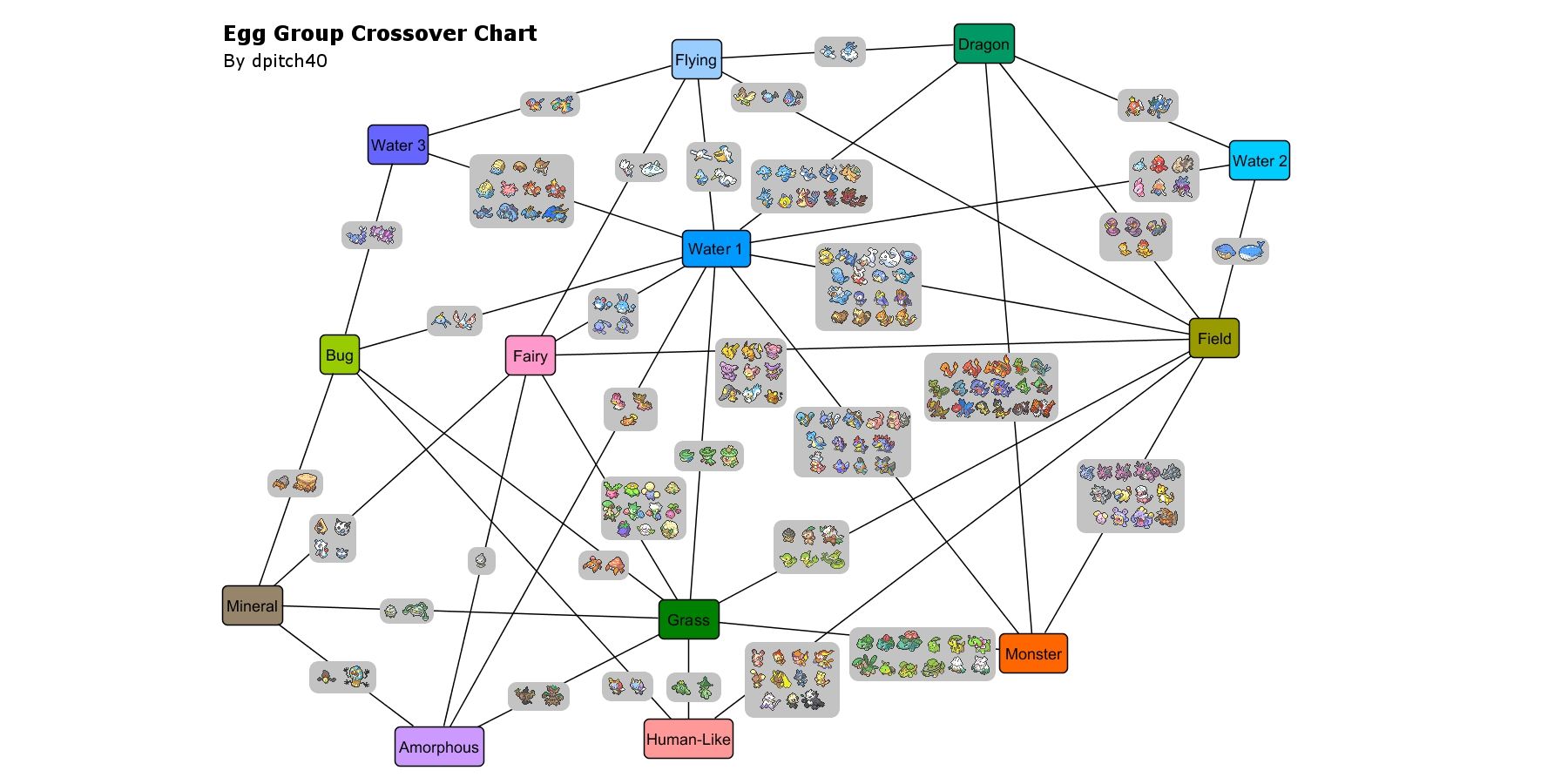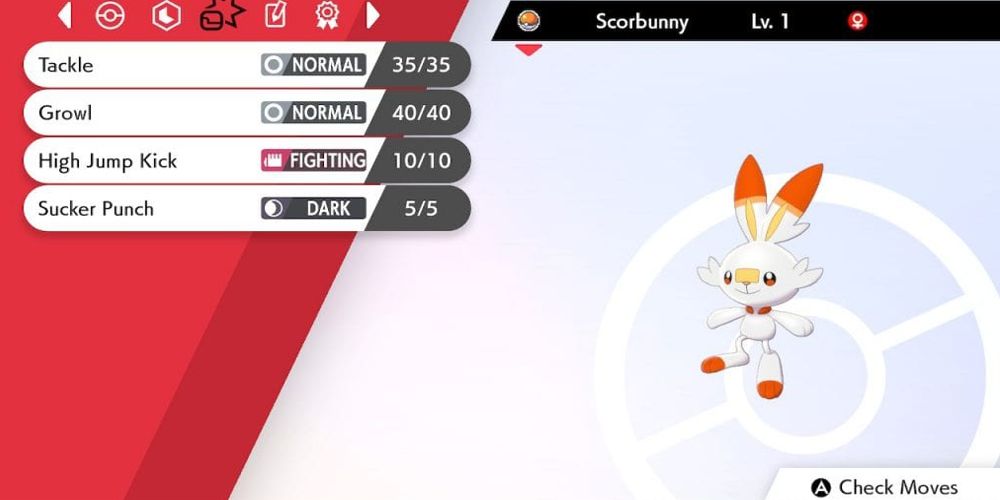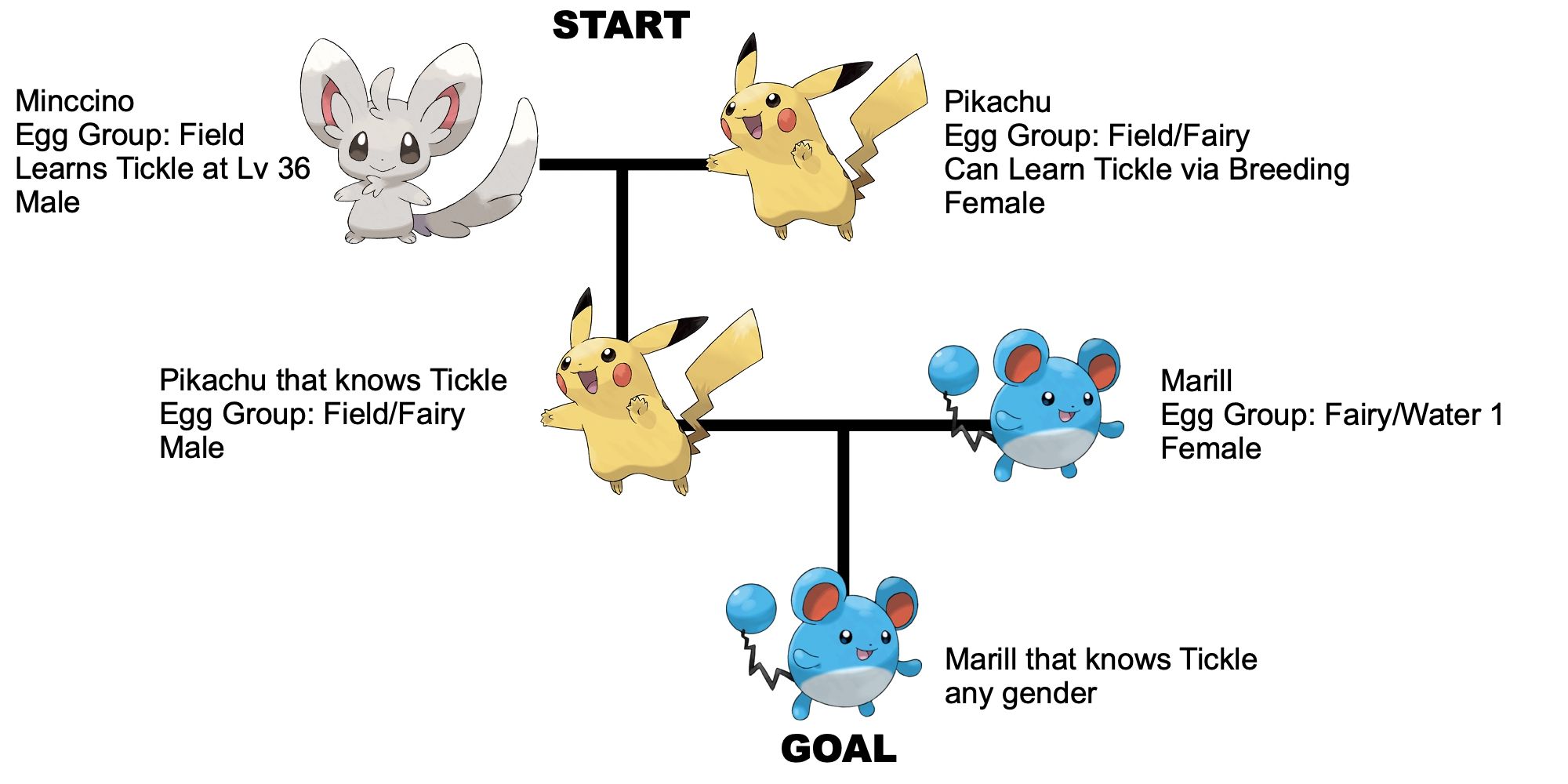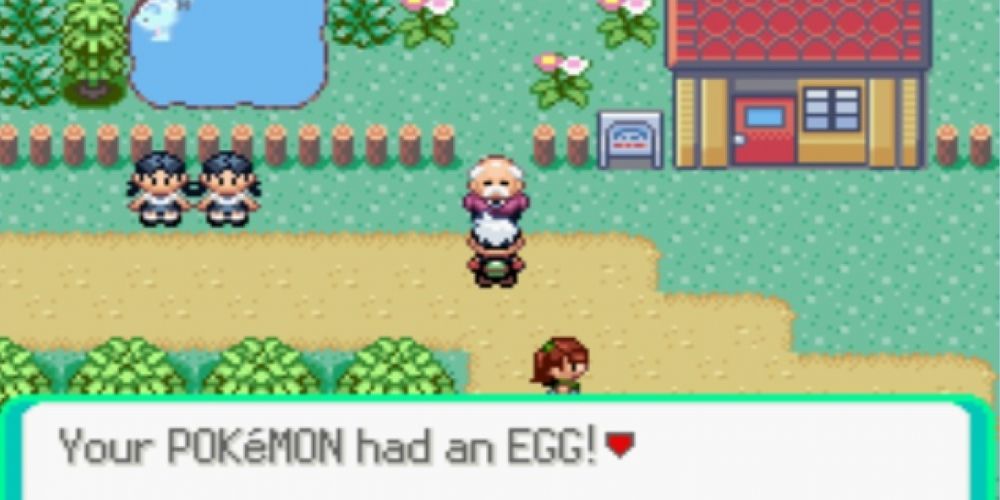Ever since the release of Generation II in the late 90s, Pokemon have been able to Breed. It's an amazing phenomenon that always happens just out of eyesight in the Daycare, but rest assured, your Pokemon has brought new life into the world! You'd think that the Daycare man would be less astonished after the dozenth time, but apparently, no human has ever seen a Pokemon lay an egg. It remains a mystery to humanity, but that doesn't mean you can't take advantage of the benefits we are aware of.
Pokemon breeding offers so much potential to those trying to get the perfect Pokemon, whether that be a shiny or one with the perfect nature. The ability to control the outcomes of IVs and moves from the moment a Pokemon hatches from its egg is a very useful power indeed, one that many players have poured thousands upon thousands of hours into. The benefits of breeding don't stop at stats, though: some Pokemon can only learn certain moves through breeding.
By combining compatible Pokemon with the desired moves, you can get movesets that you never thought possible before, discovering the surprisingly deep mechanics of Pokemon breeding. Keep reading and we'll teach you everything you need to know about the process.
Pokemon Breeding Terms
Let's start by clarifying some terms that may confuse those less experienced with the overall mechanics of Pokemon breeding. It's a complex system, so no shame!
Breeding: Breeding is, at its core, placing two compatible Pokemon together and waiting until they produce an egg. Pokemon can be placed together in locations such as the Day Care or Nurseries which take two of your Pokemon at a time. The likelihood of an Egg being produced is based on two things: species and Original Trainer stat.
Species means that two Pokemon of the same species (such as two Lanturn but NOT a Lanturn and a Chinchou) will be more likely to make an egg together. Original Trainer stat means that Pokemon are more likely to breed when they are caught by different trainers in the game, so trading with friends or online can help with this. The Oval Charm item will increase the rate of an Egg being produced, though most players simply prefer to Bicycle around and wait until an Egg eventually pops up.
Egg Group: What determines whether two Pokemon are compatible? It depends on their Egg Group, a trait that's hidden in games but mentioned throughout official Pokemon guides. There are 16 Egg Groups in total, and Pokemon can belong to one or two Groups, similar to Type. The Pokemon Sandshrew belongs to the Field Egg Group and can breed with other Field Egg Group Pokemon such as Sentret, Snivy, and Eevee. Pokemon in multiple Egg Groups such as Lucario (both Field and Human-Like) can breed with any Field Pokemon (Sandshrew) and any Human-Like Pokemon (Alakazam).
Ditto, the Pokemon able to breed with almost any Pokemon, has its own category of Egg Group, fittingly called "Ditto." Pokemon without genders such as Magnemite are labeled "Gender Unknown", while legendaries and special Pokemon such as Cosplay Pikachu and Mewtwo are labeled "No Eggs Discovered". Baby Pokemon cannot breed, for obvious reasons.
Egg Moves: An Egg Move is a move that a Pokemon inherits from one of its parents. This is often the only way the Pokemon can learn that move. For example, Charmander can't learn the move Ancient Power by leveling up or TM, but it can inherit the move if its parent is a Tyrunt or Amaura who knows the move. Both Tyrunt and Amaura are in the Monster Egg Group like Charmander and can learn Ancient Power normally.
Before Pokemon's Generation VI games, only the male/father Pokemon was capable of passing down egg moves, so make sure to keep this in mind if you're playing an older Pokemon game. Nowadays, an egg move can be passed down regardless of gender/parental role. You can learn much more about Egg Moves here.
What Is Chain Breeding?
In simple terms, Chain Breeding is passing down Egg Moves multiple times until they reach the desired Pokemon. Sometimes, breeding once isn't enough: It requires using several Pokemon in order to get the desired Egg Move onto a Pokemon of the correct Egg Group. Only then can that Pokemon breed with the species you want to have the move.
This process of "chaining" can be rather simple or quite complex depending on what move (and how many moves) you are hoping to achieve on the final Pokemon.
Why Should I Chain Breed?
Chain Breeding allows Pokemon to know and use moves they wouldn't normally learn on their own without breeding intervention. For example, Scorbunny is capable of learning High Jump Kick and Sucker Punch, but it won't ever learn these moves via leveling up, and they cannot be taught via TM or Move Tutor. It requires specific breeding with another Pokemon who knows the move(s) in order for their offspring to learn said moves. So if your Scorbunny doesn't know Sucker Punch, it will never be able to learn, but its children can. Even in Pokemon, children are the future.
Chain breeding benefits those who have a specific strategy in mind for their team, those who want unpredictable or uncommon movesets to surprise others, and those who simply want to use their favorite moves on their favorite Pokemon. It's a great hidden mechanic that adds replayability and depth to the main series games.
An Example of Successful Chain Breeding
Let's say we want a Marill that knows the move Tickle. This will require some breeding in order to accomplish, specifically chain breeding. Luckily, many devoted fans that have come before you know exactly which Pokemon can learn which moves, and have compiled the most thorough list of breeding moves for each Pokemon on Bulbapedia. There we can see that Marill's Egg Group is both Water 1 and Fairy, offering a wide pool of possible candidates for breeding.
There are a total of 12 Pokemon that are in either of those Egg Groups and can know Tickle. These Pokemon include the Pikachu line, the Lotad line, and the Cherubi line, to name a few. All 12 Pokemon, however, must learn Tickle themselves through breeding. This is where the "chain" aspect of chain breeding comes in; there's more than one step required to breed Tickle onto Marill, and it involves more Pokemon than just Marill itself. Below is one way of obtaining Marill:
Step 1: Obtain a Pokemon who can learn Tickle and can breed with a Pokemon in either the Fairy or Water 1 Egg Group. By process of elimination, this would be either the Tangela line or Minccino Line. Let's chose Minccino for this example.
Step 2: Have Minccino learn Tickle at level 36 and then breed it with a Pokemon in the Fairy Egg Group (we'll choose Pikachu.) You'll need to breed a male Pikachu to ensure the next step works. Now we have a Pokemon in the same Egg Group as Marill that knows the move we want.
Step 3: Breed the male Pikachu with a female Marill to obtain a Marill who knows Tickle, as it has been passed down from its Pikachu father. This is the shortest version of a chain there is, though there exist many more complicated chains out there for players to attempt. Now Marill can devastate its opponents in battles with tickles thanks to the miracle of breeding.
(Almost) Endless Possibilities
As is typical for the dedicated fanbase of Pokemon, a special tool has been made online to make Chain Breeding easier called the Pokemon Egg Move Calculator. Some players challenge themselves by breeding a Pokemon with as many egg moves as it can possibly learn, especially if it requires a long chain of Pokemon to achieve.
Players also breed Pokemon for perfect IVs, desired ability, and their preferred Nature too, meaning there are a lot of variables to keep track of when breeding the perfect Pokemon for a competitively viable team, and that's all before the Pokemon itself is even born! The Pokemon world is truly complex, and while it may not be on the same level as our human DNA and genetics, it's kept players coming back for more, on their bicycles and hatching eggs as fast as they can.

